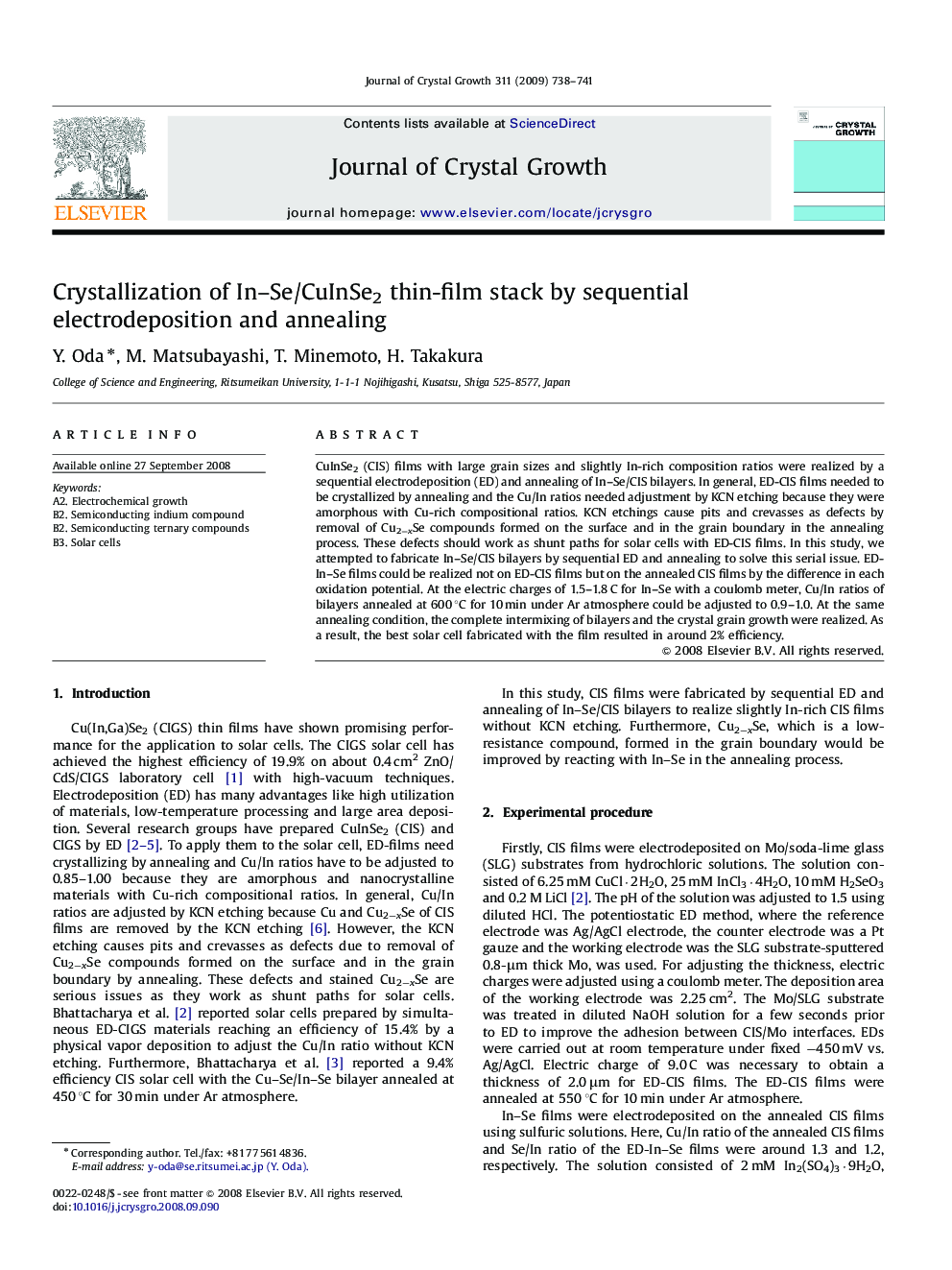| Article ID | Journal | Published Year | Pages | File Type |
|---|---|---|---|---|
| 1793730 | Journal of Crystal Growth | 2009 | 4 Pages |
Abstract
CuInSe2 (CIS) films with large grain sizes and slightly In-rich composition ratios were realized by a sequential electrodeposition (ED) and annealing of In-Se/CIS bilayers. In general, ED-CIS films needed to be crystallized by annealing and the Cu/In ratios needed adjustment by KCN etching because they were amorphous with Cu-rich compositional ratios. KCN etchings cause pits and crevasses as defects by removal of Cu2âxSe compounds formed on the surface and in the grain boundary in the annealing process. These defects should work as shunt paths for solar cells with ED-CIS films. In this study, we attempted to fabricate In-Se/CIS bilayers by sequential ED and annealing to solve this serial issue. ED-In-Se films could be realized not on ED-CIS films but on the annealed CIS films by the difference in each oxidation potential. At the electric charges of 1.5-1.8 C for In-Se with a coulomb meter, Cu/In ratios of bilayers annealed at 600 °C for 10 min under Ar atmosphere could be adjusted to 0.9-1.0. At the same annealing condition, the complete intermixing of bilayers and the crystal grain growth were realized. As a result, the best solar cell fabricated with the film resulted in around 2% efficiency.
Keywords
Related Topics
Physical Sciences and Engineering
Physics and Astronomy
Condensed Matter Physics
Authors
Y. Oda, M. Matsubayashi, T. Minemoto, H. Takakura,
